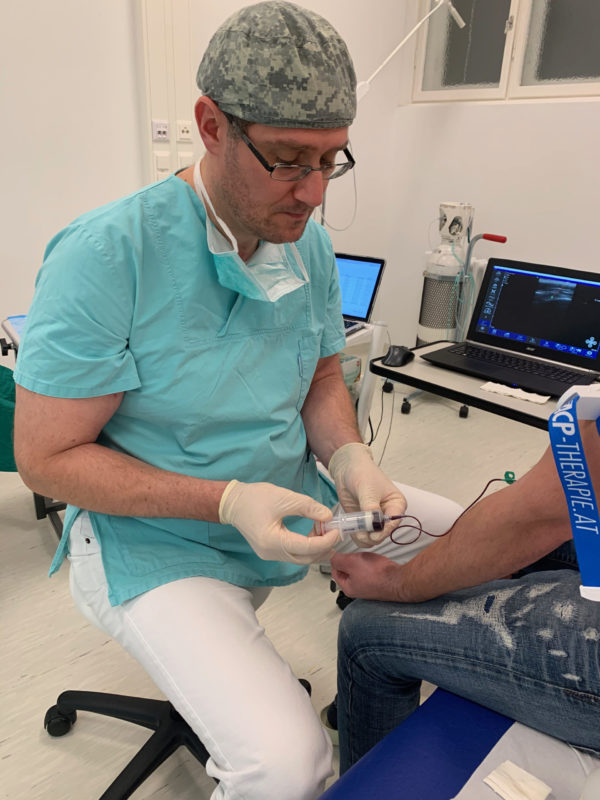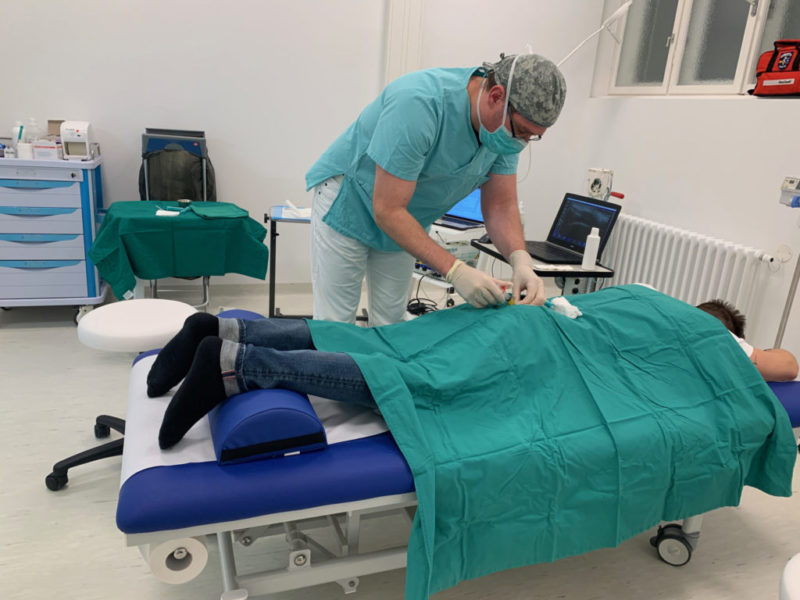For the first time, ACP autohemotherapy is also being used for the treatment of herniated discs, spine-related nerve damage, wear-related damage to the spine and chronic low back pain.
Since its foundation the OSZM (Orthopedics and Pain Therapy Centre Meidling) has been using the treatment with ACP (Autologous Conditioned Plasma) for the therapy of sports injuries, wear-related joint complaints, tendon injuries and chronic diseases such as arthrosis or tendon sheath irritation. The use of autologous plasma therapy for herniated discs is only recent.
What is meant by ACP therapy?
In ACP therapy, the affected areas are treated with the patient's own plasma. The growth factors contained in the blood positively influence the healing process. The concentrated growth factors obtained from the ACP double injection can stimulate the healing processes. In the case of orthopedic complaints, there is a significant improvement in the course of pain and mobility.
By processing the blood, plasma with a 2 to 3-fold concentration of thrombocytes (blood platelets) is obtained. The thrombocytes are activated outside the bloodstream and release proteins such as growth factors. This supports the healing process. Growth factors act by differentiating between different cell types, improving collagen production and stimulating angiogenesis (growth of blood vessels through cleavage processes).cleavage processes).

How does the ACP own blood therapy work in case of a herniated disc?
In ACP autohemotherapy, a small amount of blood is taken from the patient with a double syringe provided for this purpose. Then, the blood is centrifuged at 1500 rpm for 5 minutes. This separates the blood components. The blood plasma and thus the regenerative components of the blood are injected within half an hour after collection. The highly concentrated growth factors contained accelerate the healing process.
In the case of an acute herniated disc, ACP therapy after pain treatment promotes a faster breakdown of the prolapse and healing of the injured disc. In the long term, the nerve roots are regenerated with the auto-blood therapy and thus painful common damage such as muscle cramps, lumbago, tingling paresthesia, cold sensations are avoided.
In the area of the lower lumbar spine, the therapy is administered by means of epidural injection. In the case of herniated disks and higher regions up to the cervical spine the injection takes place with the help of a CTI with pinpoint accuracy.
The intervention is performed at weekly intervals with a subsequent regeneration phase of up to 6 weeks. During this period, different reactions can be observed: significant improvement, regeneration pain (wound healing pain), or activation of the damaged nerves with partial short-term increase in symptoms.


Widespread disease: disc herniation
A slipped disc is a degenerative and/or pressure-load-induced damage to the spine. Especially during heavy lifting, long periods of sitting and standing, the disc nucleus can swell due to excessive pressure. The pressed out intervertebral disc tissue, which basically always contains parts of the fibrous cartilage rings that are concentrically arranged around the so-called gelatinous core, presses on the contents of the spinal canal and/or the nerve root.
When this happens, it usually leads to lumboischialgia (colloquially "sciatica"), i.e. the occurrence of lumbago pain, which can also radiate into a leg.
The great danger with a herniated disc is that the sciatic nerve is pinched off at its root and thus permanently damaged.
The cause is often an overload with previous damage to the intervertebral discs. However, a herniated disc can also occur without external cause.
For the first time in the history of ACP, this therapy is now being used by Dr. Birner to avoid surgery in cases of disc problems. ACP autohemotherapy is currently the only drug-free regenerative and preventive treatment method besides physiotherapy and lifestyle change.




